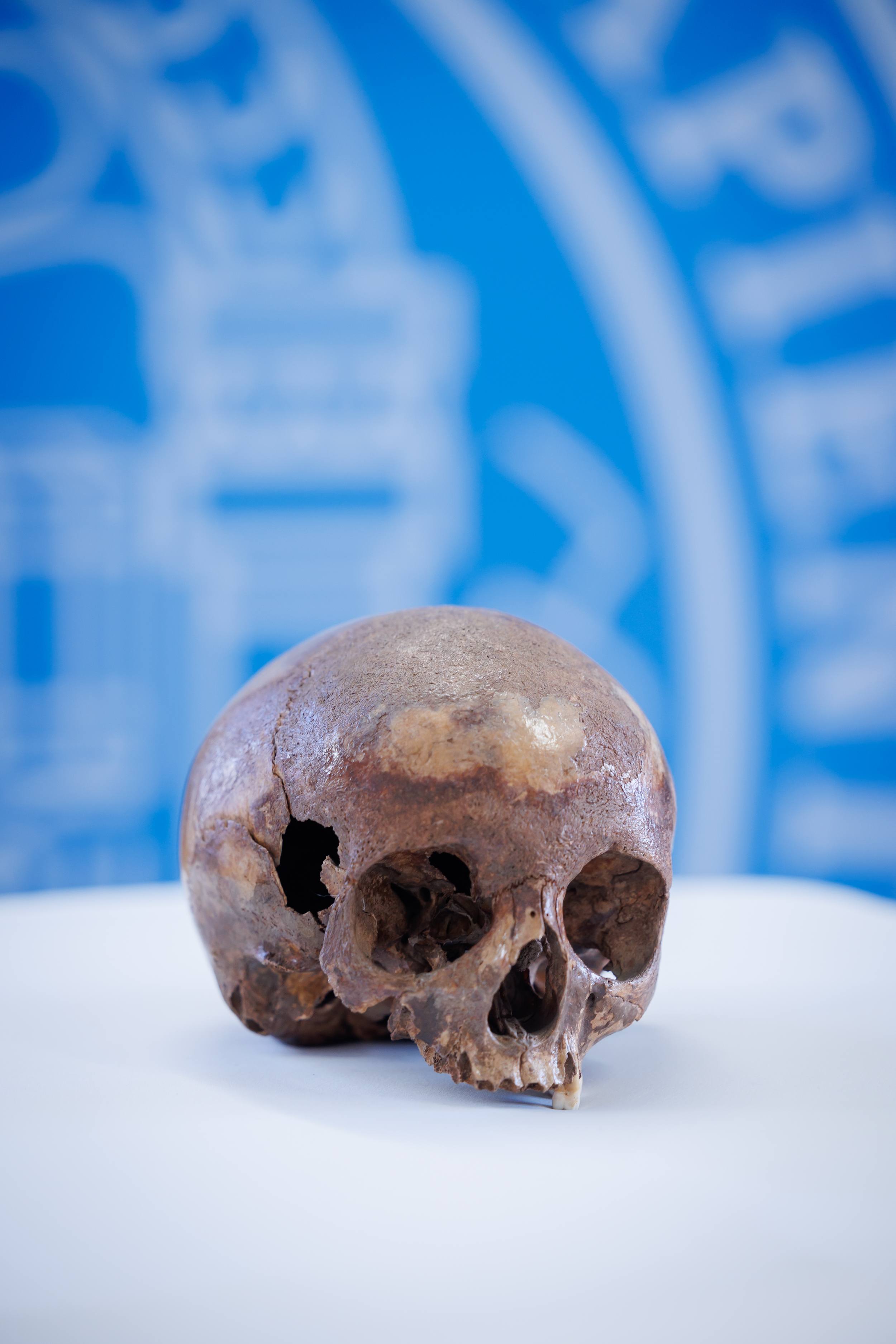An interdisciplinary team of researchers has found that a skull long thought to belong to Arsinoë IV, the sister of Cleopatra, actually belonged to a young boy. The results show that the individual was probably between 11 and 14 when he died, and he may have had a pathological developmental disorder. But while the study shines new light on this previously unknown person, it leaves on mystery still unanswered: where is Arsinoë?
In 1929, Josef Keil, an Austrian archaeologist, and colleagues found a sarcophagus filled with water in the ruins of what was once the “Octagon”, an incredible building on in Ephesos, an ancient city in what is now Turkey.
The sarcophagus held a complete skeleton, though it did not have any other grave goods with it. Before they sealed the tomb up again, Keil grabbed the skull from the remains and took it back to Germany for analysis. He came to the conclusion that the tomb belonged to a “a very distinguished person” and the bones were those of a 20-year-old woman.
Fun fact, and a clear demonstration of how archaeological methods have changed in less than 100 years, Kiel actually transported the skull in his luggage when he was given an appointment at the University of Vienna.

We now know the skull belonged to a boy in his early teens who lived with a significant developmental issue.
Image credit: derknopfdruecker.
In 1953, Keil finally published his research with photos and measurements of the skull. He also believed the skull from what he considered a “Heroon” – a shrine dedicated to a heroic figure in ancient Greek and Roman culture – belonged to a young woman who was of a “refined, specialised type”, suggesting an aristocratic background.
Decades later, in 1982, another excavation at the site in Ephesos rediscovered the rest of the skeleton, but this time it had been placed in a niche in an antechamber of the burial chamber, rather than in the sarcophagus.
Then, in 1990, researchers started to speculate on who this individual was, leading some archaeologists to believe it was none other than Arsinoë IV. They reached this conclusion based on a few points. Firstly, there were suspected architectural similarities between the Octagon and the model of the “Pharos of Alexandria” in Egypt. Then there was the fact that Arsinoë IV was actually murdered in Ephesos in around 41 BCE, at the command of Mark Antony, Cleopatra’s lover.
Since then, numerous studies and reports have been published proliferating this rumour. However, is it true?
Well, no. The Department of Evolutionary Anthropology at the University of Vienna has applied modern anthropological and scientific methods to the skull and determined something very different.
A team of geneticists, dating specialists, orthodontists and archaeologists from the Austrian Academy of Science examined the skull. Firstly, they subjected it to micro-computed tomography (micro-CT) – a 3D imaging technique that creates a model of an object with X-rays, slice by slice – to create a high-resolution digital copy. The team then took small samples from the base of the skill and its inner ear to investigate the individual’s age and genetic status.
The data collected from their mass spectrometry assessments were compared with the latest carbon dating curves and indicated that the skull dates to between 36 and 205 BCE. This does indeed capture the date in which Arsinoë IV died. Genetic comparison between the skull and the bones (re)discovered in the tomb in the 1980s also confirmed that they belong to the same person – vindicating Keil’s views.
So things were looking good for the Arsinoë IV hypothesis. However, things then took a surprising turn.
In “repeated tests, the skull and femur both clearly showed the presence of a Y chromosome – in other words, a male,” Gerhard Weber, an Austrian paleoanthropologist and lead author on the new study explained in a statement.
Morphological analysis of the skull and the micro-CT data showed that the boy was probably still in puberty. This finding was confirmed by the high-resolution images of the skull’s dental roots and the fact that the base of the skull was still developing at the time of death.
In addition to this, the team also found that the boy was likely living with some sort of pathological developmental issue. One of his cranial sutures – the fibrous joints that connect the bones of the skull – had already fused, something that does not normally happen until a person is around 65 years of age. This left the skull with a very unusual asymmetrical shape.
The boy also had an underdeveloped upper jaw that was angled downwards. It is likely this led to significant issues when it came to chewing food. This problem was backed up by dental data indicating that the first tooth of the permanent dentition, one that would have had the longest period of use, showed no signs of wear. In contrast, the first premolar, which usually appears in the mouth a few years later, showed considerable signs of use, with clear cracks that may have come from overloading.
It is still unclear what led to the boy’s growth disorder. It may have been the result of a vitamin-D deficiency or perhaps a genetic syndrome, such as Treacher Collins syndrome, which leads to an appearance not dissimilar to that of the boy.
But while this analysis gives us a new identity for the individual buried in the tomb, it is still unclear why the Octagon borrowed such distinctly Egyptian styles of architecture. What’s more, the hunt for the real Arsinoë IV can begin again free of the rumor that she was buried at this site.
The study is published in Scientific Reports.
Source Link: Identity Of Skull Believed To Belong To Cleopatra's Sister Finally Revealed